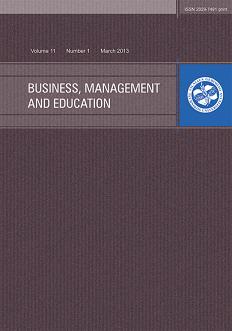Stock splits and liquidity for two major capital markets from central–eastern europe
Stock splits and liquidity for two major capital markets from central–eastern europe
Author(s): Józef RudnickiSubject(s): Economy
Published by: Vilnius Gediminas Technical University
Keywords: stock split; liquidity hypothesis; liquidity; trading volume; market efficiency; transaction costs; event study; market adjusted return method;
Summary/Abstract: In the stock market there occur some events that contradict the efficient market hypothesis therefore they are called anomalies. One of the mysterious corporate events which has attracted the attention of numerous researchers is a stock split. I perform the review of implications of splitting the stock for market liquidity of companies listed on the Warsaw Stock Exchange and the Vienna Stock Exchange. I use event study, in particular Market model method and Market adjusted return method, to inspect the behavior of abnormal changes in daily trading volume for stock splits performed between 2000 through 2011 over a short run and assuming a longer time interval. Moreover, I juxtapose the results for both stock exchanges to examine whether the stock split phenomenon for two major capital markets from this part of Europe can be better explained by means of existing theories on stock splits. The research is aimed at analyzing the implications of the split for market liquidity, i.e. whether there occurs an immediate effect following the split as well as whether this corporate event improves the level of market liquidity over long run. Furthermore, the goal of the paper is to investigate whether the investors can cash in on the stock split, more specifically, whether they can profit from lower transaction costs. I document a significant growth in the market liquidity of stock splitting firms over 36 months following the split for both capital markets what is indicative of lower transaction costs for investors. The 1–percent significant results are consistent with the liquidity hypothesis on stock splits.
Journal: Business, Management and Education
- Issue Year: 10/2012
- Issue No: 2
- Page Range: 145-158
- Page Count: 14
- Language: English

